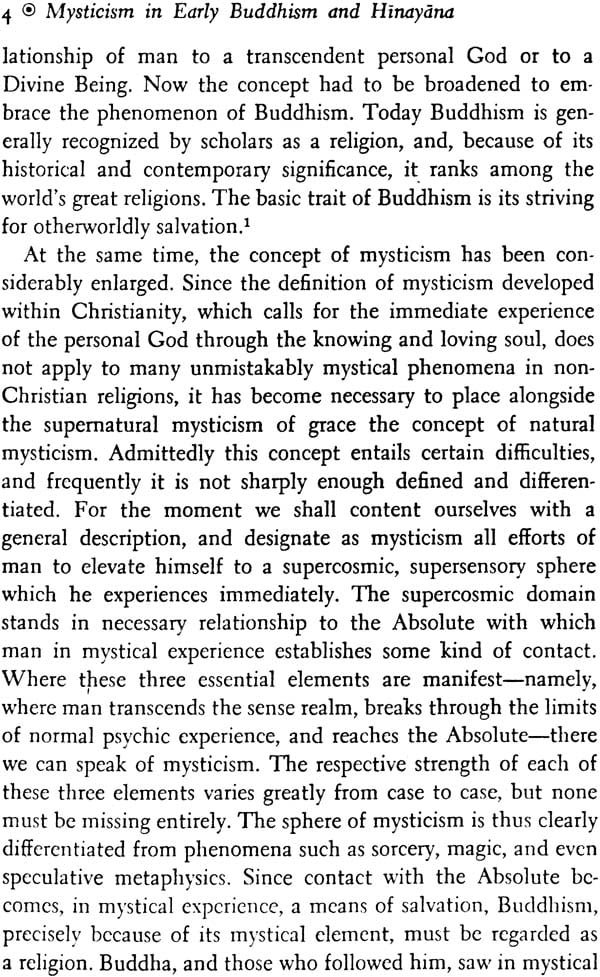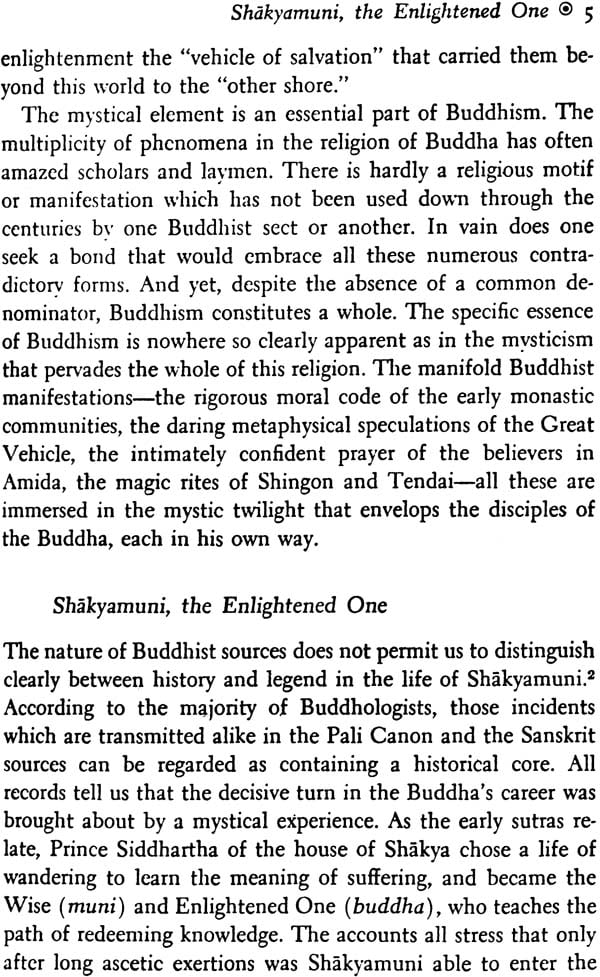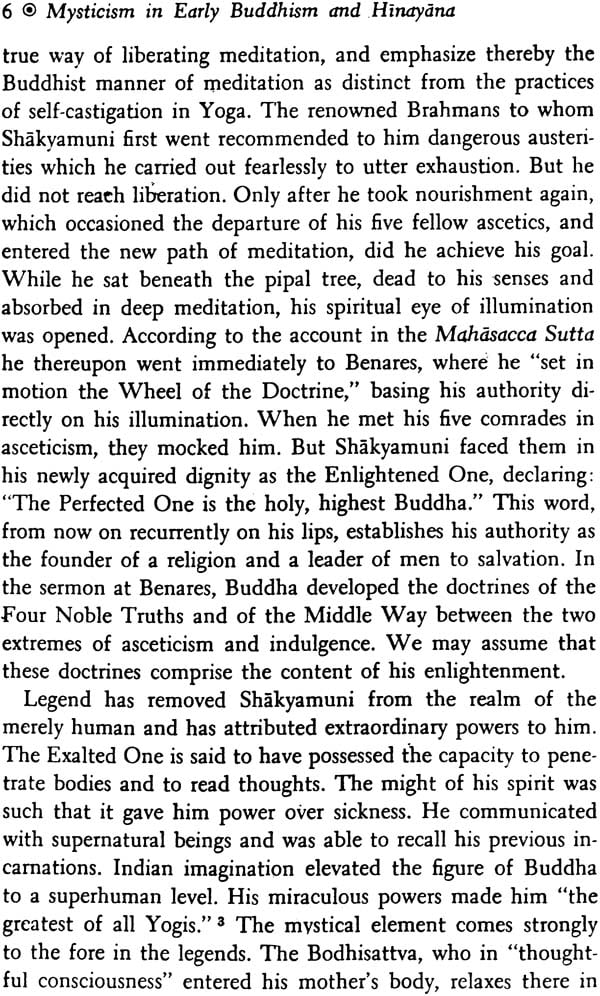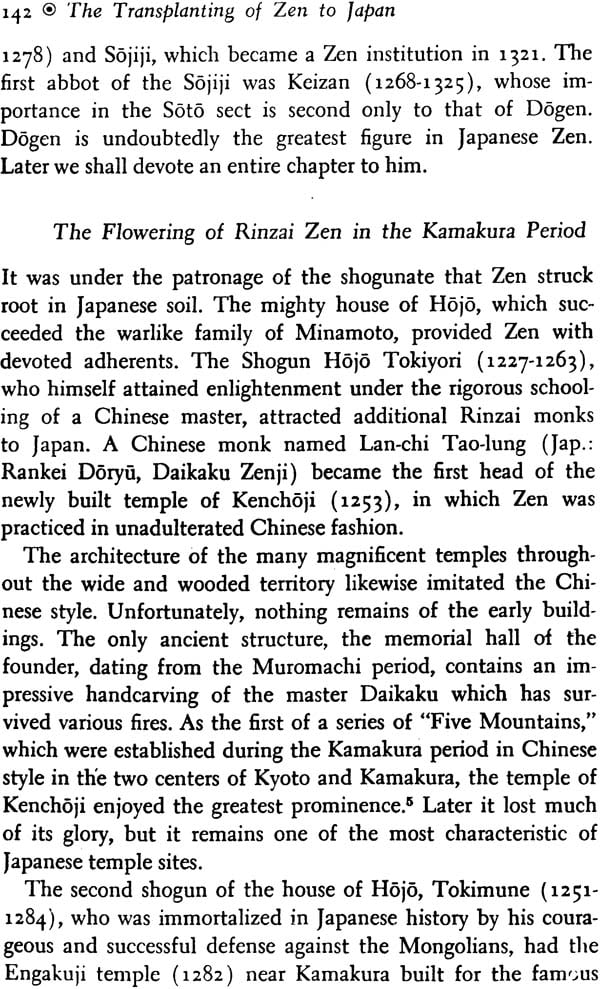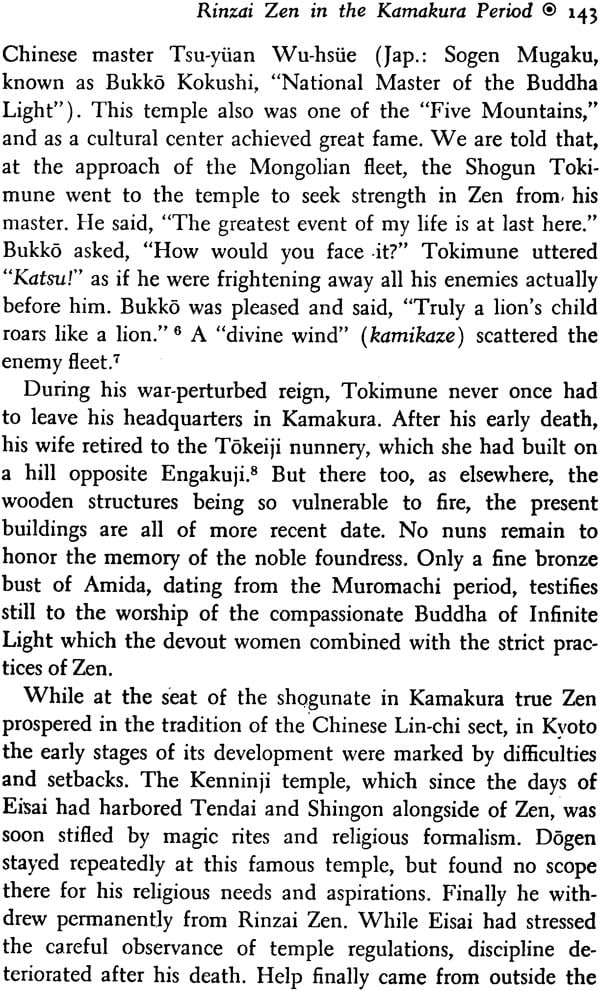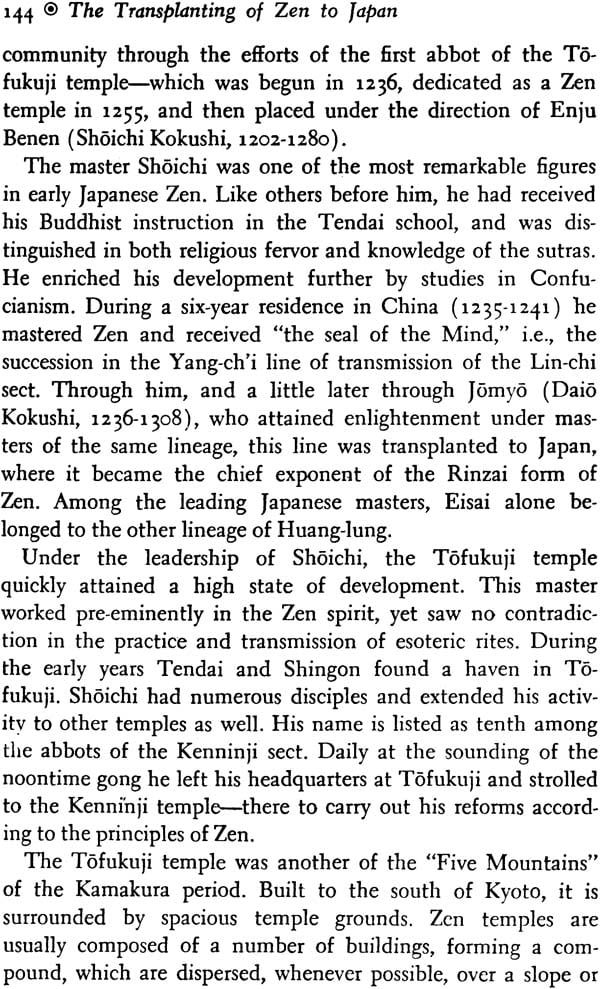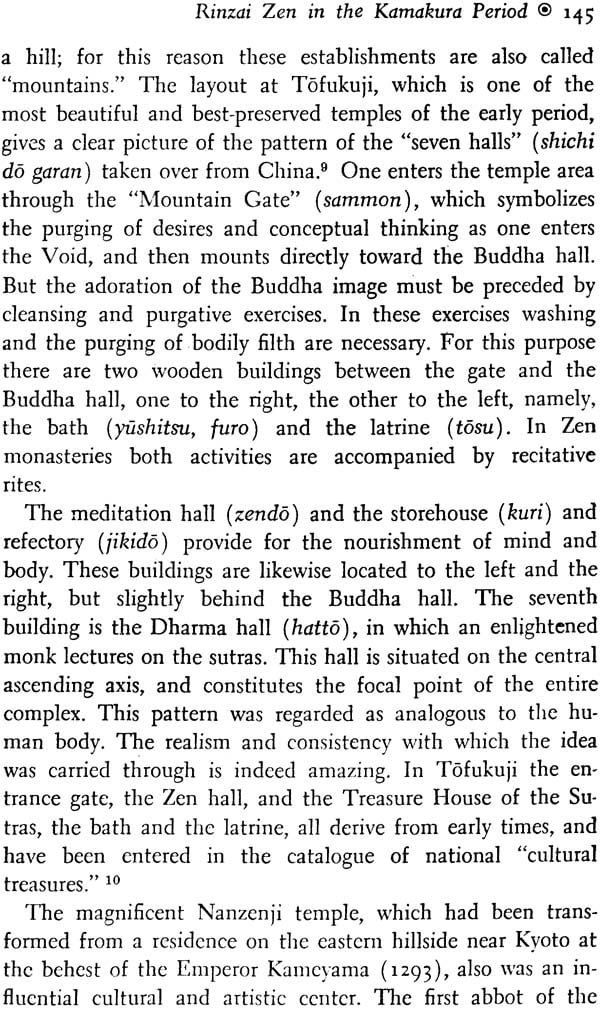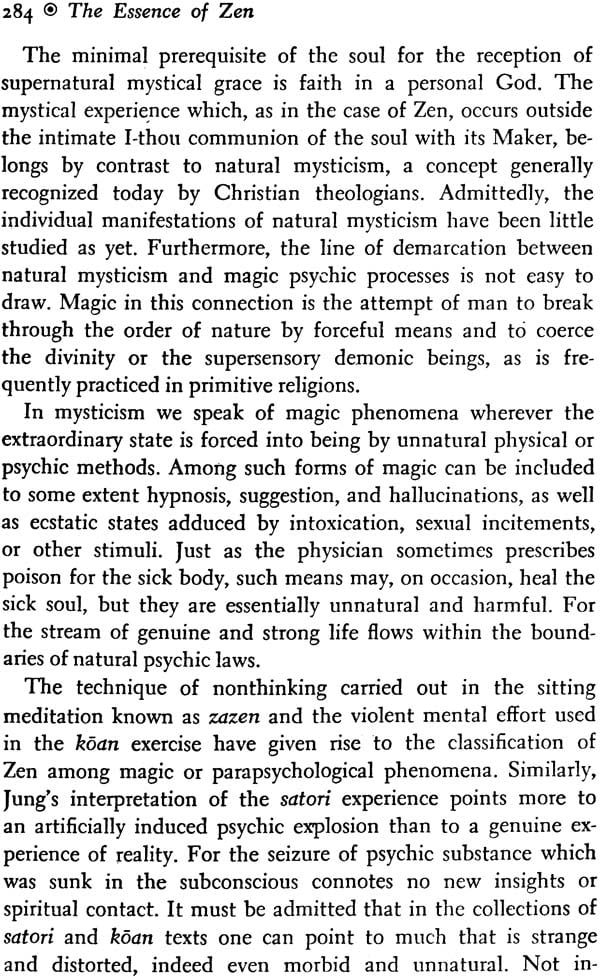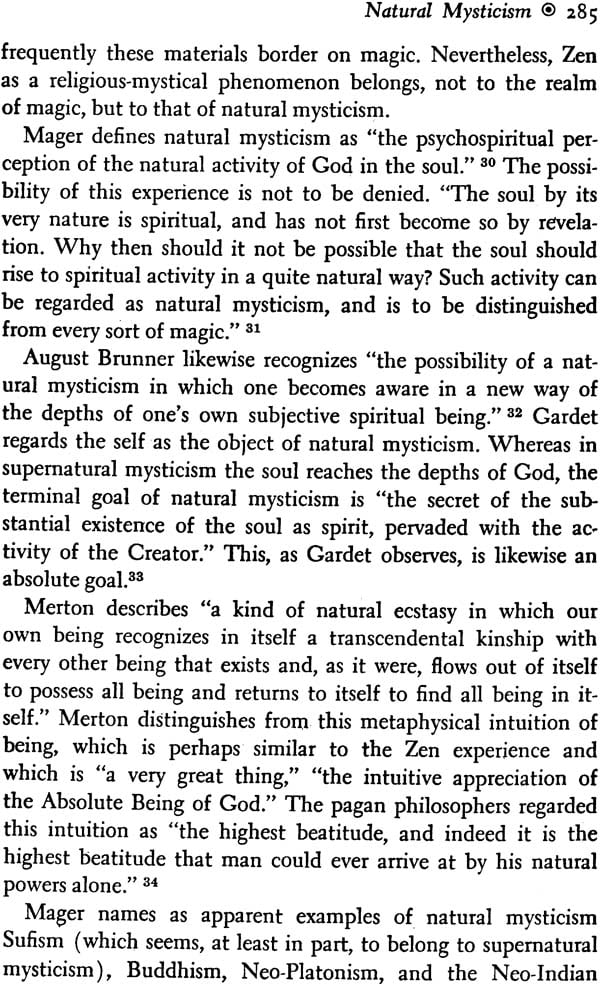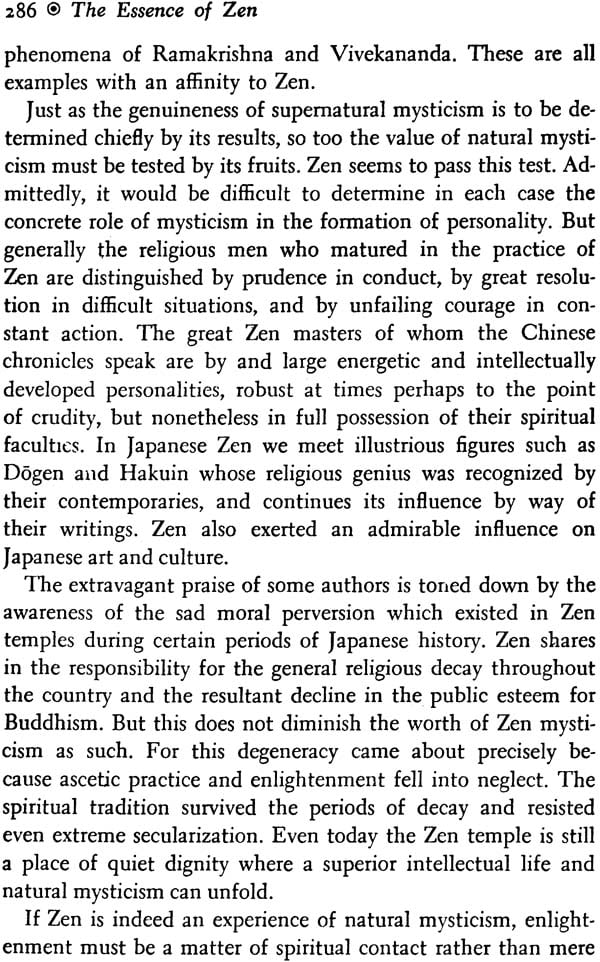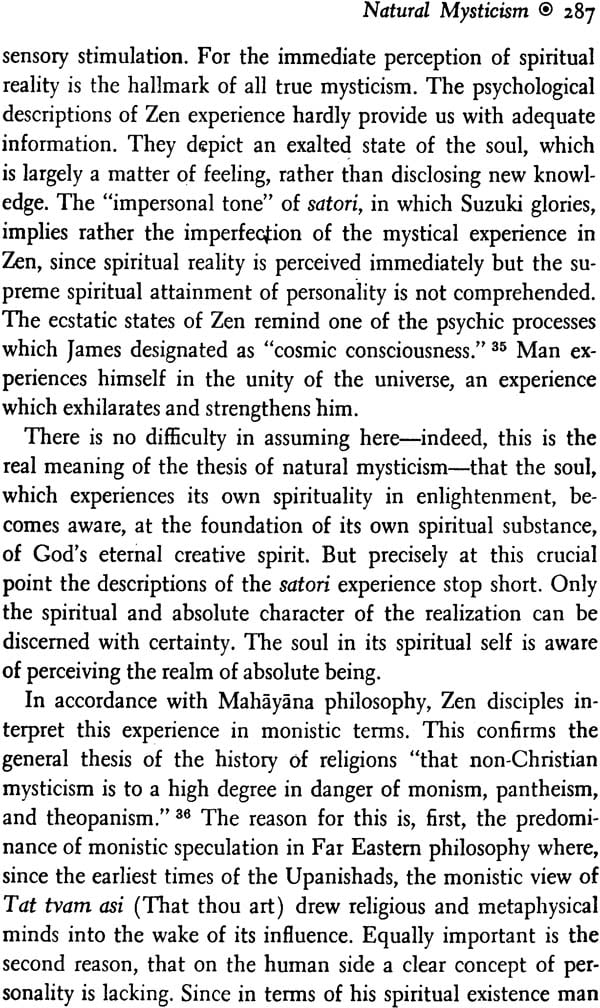
A History of Zen Buddhism
Book Specification
| Item Code: | IDC883 |
| Author: | Heinrich Dumoulin, S.J. |
| Publisher: | MUNSHIRAM MANOHARLAL PUBLISHERS PVT LTD |
| Language: | English |
| Edition: | 2011 |
| ISBN: | 9788121509589 |
| Pages: | 349 (16 B/W Illustrations) |
| Cover: | Paperback |
| Other Details | 8.5 inch X 5.5 inch |
| Weight | 450 gm |
Book Description
From the Jacket:
This book is of a historical nature and is intended to give readers a faithful account of the historical development of Zen Buddhism. However Zen is not merely of historical interest; it has importance for the present day.
History reveals the form and leads to the essence of things. In historical research we are guided by the things themselves, and we try to comprehend their response and their teaching. The object of the book is to put the reader into a close contact with Zen as possible to elucidate its inner form from history and make its living values apparent.
Interest in Zen Buddhism has grown continually since this book was first published in German. Although it was then thought necessary to preface the work with some remarks for the benefit of Western readers about Zen and its living values, a general knowledge of Zen Buddhism can now be presupposed. To be sure, this knowledge is often and in many respects inadequate, distorted, or even altogether false. In the wake of the "Zen boom" in the United States, there originated "Beat Zen," "Square Zen," and other distorted forms which must be considered caricatures rather than true expressions of Zen Buddhism. A French scholar who had lived in Asia for many years once said to me: "One has to distinguish between Buddhism in Asia and Buddhism for Europeans." This very relevant remark applies to Zen Buddhism as well. Zen Buddhism in Asia can only be under- stood in terms of its Asian development-its origin in China, most likely in the sixth century, the meditation tradition of a thousand years' duration upon which it was based, and its thirteenth-century transplantation to Japan where it reached its : fullest and highest development. Hence, in order to obtain a reliable and correct knowledge of Zen Buddhism, our interest is directed towards a study of its history.
I feel very grateful to my Japanese friends who, shortly after my entrance into the postgraduate course of the Science of Religions Department of the then Tokyo Imperial University in 1936 (one year after my arrival in Japan), introduced me to Zen Buddhism and encouraged me to study its history, for I have continually found this a most fascinating subject of study. Two of my fellow students, themselves believers in Zen, used to ac- company me on visits to Zen monasteries in Tokyo and its vicinity, and invited me to read with them a Zen text, the famous Man collection Mumonkan. This k6an eol1ection presents a vivid reflection of the history of Zen Buddhism in China during a span of nearly five centuries. Out of this study came a short summary of the history of Chinese Zen Buddhism, which was written in German and first published in Monumenta Serica (Vol. VI, 1941, pp. 40-72).
At our first meeting Mrs. Ruth Fuller Sasaki suggested that I write a complete history of Zen Buddhism. At that time I declined laughingly. However, the importance of such a scholarly endeavor always remained in my mind, and from that time on I tried to extend my studies of the history of Zen Buddhism in different directions, and when time was available, I began to work upon a synthesis of these studies. Whenever possible I tried to fill in gaps and to indicate the connection of movements and events. Naturally, it was impossible to shed light on all the obscurity, for in the history of Chinese Zen Buddhism, as in the whole of the history of Chinese Buddhism, there is still much unexplored territory. The personality of Bodhidharma as well as the beginnings of Zen (Ch.: Ch' an) in China remains uncertain. The fusion of Buddhist and Taoist elements had probably already progressed far in the schools of contemplation which preceded Zen. The precise proportion of Taoist influx into Zen Buddhism can as yet hardly be gauged. Even more important would be to ascertain the exact character of this influx. Further investigation will certainly enrich as well as correct our picture of the history of Zen.
This book is of an historical nature and is intended to give to the reader a faithful account of the historical development of Zen Buddhism as far as this is possible at the present time. The German edition was well received by the specialists in this field. The historical accuracy of the work was acknowledged by Buddhist scholars of the first rank. The title of the present edition, A History of Zen Buddhism, stresses even more clearly its historical orientation.
However, Zen is not merely of historical interest; it has importance for the present day. This conviction never left me during my historical studies. At the same time I am convinced of the eminently spiritual function of history. In the preface to the German edition I expressed this in saying: "Perhaps there is no other way that leads as surely to the very essence of things as inquiring into their historical development. Certainly, by its very nature, historical presentation will always be imperfect, for history in its complex interrelationships is mysterious and enigmatic, but at the same time sobering and disenchanting. . . . History reveals the form and leads to the essence of things. In historical research we are guided by the things themselves, and we try to comprehend their response and their teaching. The object of this book is to put the reader into as close a contact with Zen as possible, to elucidate its inner form from history, and to make its living values apparent."
It is impossible to thank one by one the many persons who were of help to me during the long years of preparing the Ger- man original of this book and translating it into English. Only a few names can be mentioned. The Japanese professors Reiho Masunaga, Hajime Nakamura, and Shokin Furuta have helped me in my Zen studies in many ways and contributed much useful information. Through the kind offices of Mrs. Sasaki the doors of the Zen monasteries of Kyoto with their memorable art treasures were opened to me. Mrs. Sasaki, moreover, not only put her library at my disposal during the writing of the original and its rendition into English, but also had the kindness to assist in the revision of both. Thanks to the co-operation of Fr. Hein- rich Busch and Fr. Gerhard Schreiber, I was able to make use of the Oriental Library of the Monumenta Serica. Fr. Wilhclm Schiffer and Fr. Franz Mohr assisted me in procuring the illustrations. Last, but not least, I am deeply grateful to the Reverend Mr. Paul Peachey who undertook the wearisome task of making the basic English translation of the entire book. To all these and the many others who helped in the composition and publication of this book, hearty thanks.
Contents:
Preface. 1. The mystical element in early Buddhism and Hinayana. 2. Mysticism within Mahayana. 3. The Mahayana Sutras and Zen. 4. The anticipation of Zen in Chinese Buddhism. 5. Zen patriarchs of the early period. 6. The high period of Chinese Zen. 7. Peculiarities of the 'Five houses'.
8. Spread and methodological development during the Sung period. 9. The transplanting of Zen to Japan. 10. The Zen Master Dogen. 11. The cultural influence of Zen in the Muromachi period. 12. The first encounter between Zen and Christianity. 13. Zen in the modern Japanese age. 14. The Zen mysticism of Hakuin. 15. The essence of Zen. Notes Bibliography Index

